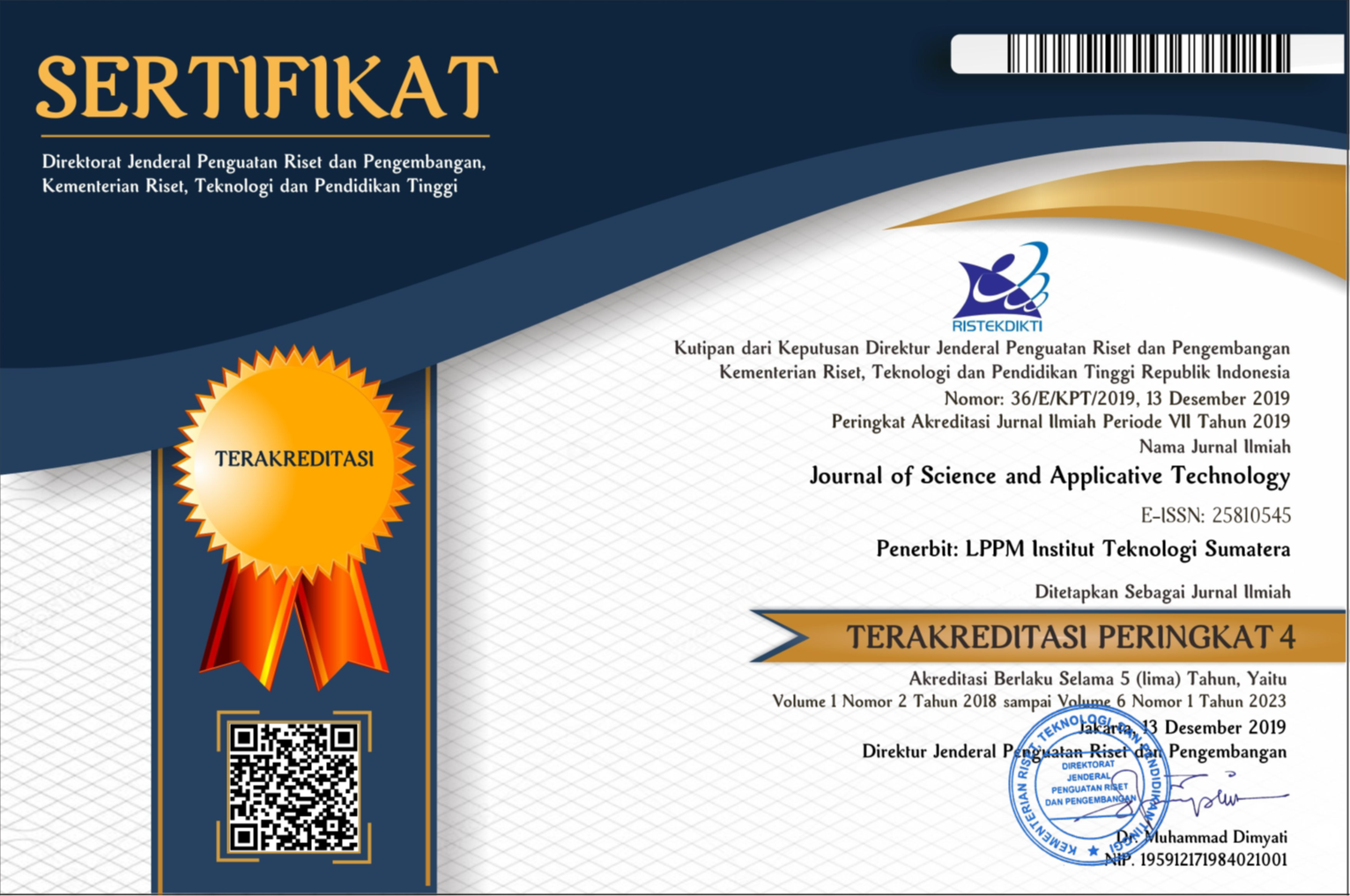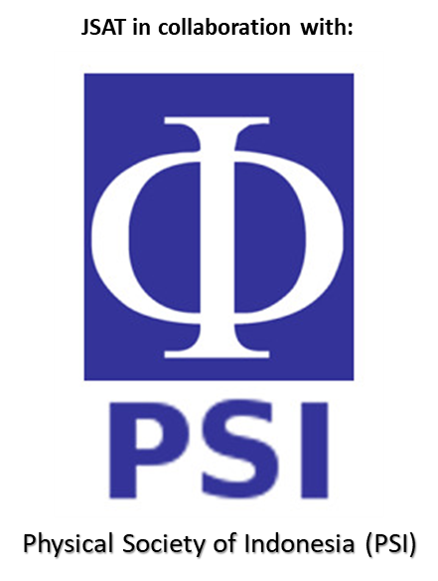Condition of Coral Reef in Kelagian Besar Island
Abstract
The coral reef ecosystem plays many important roles for society. One of the its role is as a tourist attraction. Kelagian Island lies near Pahawang island which is the major attraction of marine tourism in Lampung. This position makes Kelagian Island the most potential alternative island after Pahawang Island. However, sufficient information about the coral condition and profile in Kelagian Island has yet to support this potential. For that reason, a study about coral reef conditions on Kelagian island must be conducted to provide information and support the possibility of tourism development on Kelagian island. This study was conducted in August 2022 using Point Intercept Transect (PIT) in three different sites on Kelagian Island. Coral reef condition in 3 meter depth were generally in good condition, meanwhile in 7 meters depth coral reef condition were in medium state. There were 22 genera found in Kelagian island. Acropora and Porites were found dominating three meter depth. On the other hand in seven meter of depth, Goniopora and Favia were abundantly found. Diversity index, Evenness, and Dominance Index in Kelagian Island are 2,29-2,49 (medium), 1-0,83 (stable), and 0,12-0,15 (low) respectively.
Downloads
References
[2] A. B. Giyanto, Muhammad Abrar, Tri Aryono Hadi and M. Y. I. Muhammad Haizt, Abdullah Salatalohy, “Status Terumbu Karang Indonesia,” no. November, p. 27, 2017.
[3] L. Burke, E. Selig, and M. Spalding, Terumbu karang yang terancam di Asia Tenggara (ringkasan untuk Indonesia). 2002.
[4] D. Bryant, L. Burke, J. McManus, and M. Spalding, “Reefs at risk: a map based indicator of potential threats to the world’s coral reefs,” World Resour. Inst., p. 54, 1998.
[5] J. M. Baxter, Explaining Ocean Warming: Causes, scale, effects and consequences, no. September. 2016. doi: 10.2305/iucn.ch.2016.08.en.
[6] M. Aditya, “Inventarisasi Terumbukarang Di Pulau Kelagian Dan Pulau Mahitam,” Jur. Biol. Fakulktas Mat. Dan Ilmu Pengetah. Alam Univ. Lampung 2015, 2015.
[7] Sukmara, “PANDUAN PEMANTAUAN TERUMBU KARANG BERBASIS-MASYARAKAT DENGAN METODA MANTA TOW,” Coast. Resour. Cent., 2001.
[8] A. E. W. Manuputty and Djuwariah, “Point Intercept Transect (PIT) untuk Masyarakat Studi Baseline dan Monitoring Kesehatan Karang di Lokasi Daerah Perlindungan Laut (DPL),” Coremap Ii - Lipi, p. 73, 2009.
[9] C. Wilkinson, A. Green, J. Almany, and S. Dionne, “Monitoring coral reef marine protected areas. A practical guide on how monitoring can support effective management of MPAs,” Aust. Inst. Mar. Sci., vol. 1, p. 72, 2003,
[10] Gomez, E. D. dan H. T. Yap. 1988. Monitoring Reef Conditions. In Kenchington, R. dan B. E. T. Hudson (eds). Coral Reef Management Handbook.
[11] Tomascik, T, AJ Mah, A Nontji, and MK Moosa. (1997). The Ecology of the Indonesian Seas (Part 1 & 2). Vol. 7. Singapore: Periplus Edition (HK) Ltd.
[12] Suharsono, Jenis-jenis karang di Indonesia (Reefs in Indonesia). 2008.
[13] Veron, J. E. N. 2000. Corals of the World. Australian Institute of Marine Science and CRR Qld Pty Ltd. Townsville, Australia.
[14] Suhendra, D. 2006. Pengaruh sedimen terhadap komunitas karang batu (Scleractinian Corals) di Kepulauan Derawan, Kalimantan Timur . Tesis. Sekolah Pascasarjana Institut Pertanian Bogor. 123 pages.
[15] Dahuri, R. 2003. Keanekaragaman Hayati Laut Aset Pembangunan Berkelanjutan. Gramedia, Jakarta
[16] P. Sammarco, “Effects of fish grazing and damselfish territoriality on coral reef algae. I. Algal community structure,” Mar. Ecol. Prog. Ser., vol. 13, no. 1, pp. 1–14, 1983, doi: 10.3354/meps013001.
[17] Lasker, HL. 1980. Sediment Rejection by Reef Corals: The Roles of Behavior and Morphology in Montastrea cevernosa (Linnaeus). J Exp Mar Biol Ecol 47: 77-87
[18] Morton, J. 1990. The Shore Ecology of the Tropical Pacific. Unesco Regional Office for Science and Technology for South-East Asia. Jakarta. 297 p.
[19] N. Chadwick-Furman and Y. Loya, “Migration, habitat use, and competition among mobile corals (Scleractinia: Fungiidae) in the Gulf of Eilat, Red Sea,” Mar. Biol., vol. 114, no. 4, pp. 617–623, 1992, doi: 10.1007/BF00357258.
[20] Kramarsky-Winter and Y. Loya. 1996. Regeneration versus Budding in Fungiid Coral: a Trade-off. Marine Ecology Progress Series, 134: 179-185.
Copyright (c) 2023 Journal of Science and Applicative Technology

This work is licensed under a Creative Commons Attribution-NonCommercial 4.0 International License.
All the content on Journal of Science and Applicative Technology (JSAT) may be used under the terms of the Creative Commons Attribution-NonCommercial 4.0 International License.
You are free to:
- Share - copy and redistribute the material in any medium or format
- Adapt - remix, transform, and build upon the material
Under the following terms:
- Attribution - You must give appropriate credit, provide a link to the license, and indicate if changes were made. You may do so in any reasonable manner, but not in any way that suggests the licensor endorses you or your use.
- NonCommercial - You may not use the material for commercial purposes.
- No additional restrictions - You may not apply legal terms or technological measures that legally restrict others from doing anything the license permits.





















